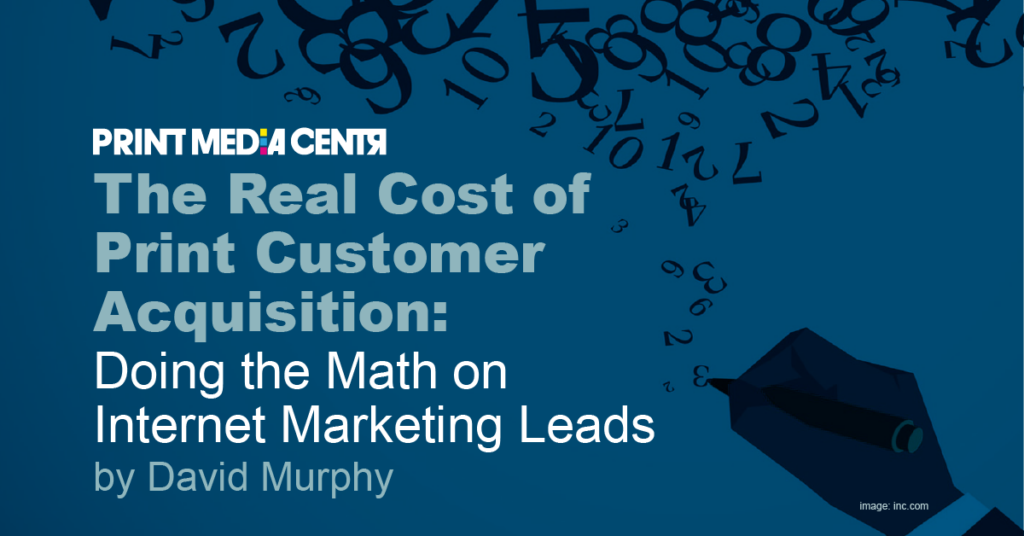
What does it cost you to get a new lead to your website from your digital marketing campaigns? The cost equation depends on a list of variables, such as your timing, your offer, your target audience, your competition, and your unique value proposition. Success also depends on factors like the creativity and appeal of your overall message and your specific words, images, and colors.
But suppose all things are equal in your digital marketing strategy and you just want to assess whether you should pay for leads through advertising or earn them through search engine optimization (SEO). To do so, you must consider your digital cost per lead (CPL) and your customer acquisition cost (CAC). Diving in, let’s look at the data from third-party sources like Google Analytics and Google Search Console.
Let’s look at search marketing campaign strategies for a print business. Here are the data points, which haven’t changed much in a couple of years.
Each month in the United States, about 110,000 people go on the internet and search for “printing services.”
Of those 110,000, about 40,000 of them will click on an organic (non-sponsored) listing on the search engine results page (SERP).
The top three search results will get about 60 percent of those clicks, or about 24,000.
Another 25,000 of the 110,000 will click on a sponsored link (paid Google Ads).
Printers buying these paid search ads pay Google about $3.00 each time their ads get clicked.
A printer with a $3,000/monthly pay-per-click (PPC) budget should get about a thousand paid visits to her website.
How many of those one thousand visitors convert to paying customers depends on various factors. Suppose there are 20 print orders with an average order of $500, totaling $10.000. Not a bad profit on a $3,000 ad spend, but it still costs $150 to acquire a $500 customer.
Say another printer uses search-optimized content marketing and gets just 2.5 percent of the 40,000 unpaid clicks. That’s one thousand, which is twice the paid search visits and without paying Google.
PPC is an engine that makes the boat go fast. It uses gas, which costs a lot. SEO is a sail that makes the boat go farther for less money (but not free). Both may be needed. It’s somewhat a choice between “urgent and expensive” versus “patient and less expensive.”
Which strategy is best for your business? There is no single answer for every printer. Print business owners just need to assess priorities, timelines, competition, and customers. And the mathematics of traffic, conversion rates, and closing rates.
 David Murphy is the founder and CEO of Nvent Marketing, a marketing agency specializing in digital marketing for the print industry. David has 30+ years of experience in the graphics and document print production industry. He has served as a board member and advisor to print organizations and associations including Sustainable Green Printing Partnership (SGP), Print Industries of America (PIA), Association for Print Technologies (APTECH), and Electronic Document Scholarship Foundation (EDSF). David was also awarded the Idealliance Soderstrom Society Award for Print Industry Leadership. David can be reached at [email protected].
David Murphy is the founder and CEO of Nvent Marketing, a marketing agency specializing in digital marketing for the print industry. David has 30+ years of experience in the graphics and document print production industry. He has served as a board member and advisor to print organizations and associations including Sustainable Green Printing Partnership (SGP), Print Industries of America (PIA), Association for Print Technologies (APTECH), and Electronic Document Scholarship Foundation (EDSF). David was also awarded the Idealliance Soderstrom Society Award for Print Industry Leadership. David can be reached at [email protected].











